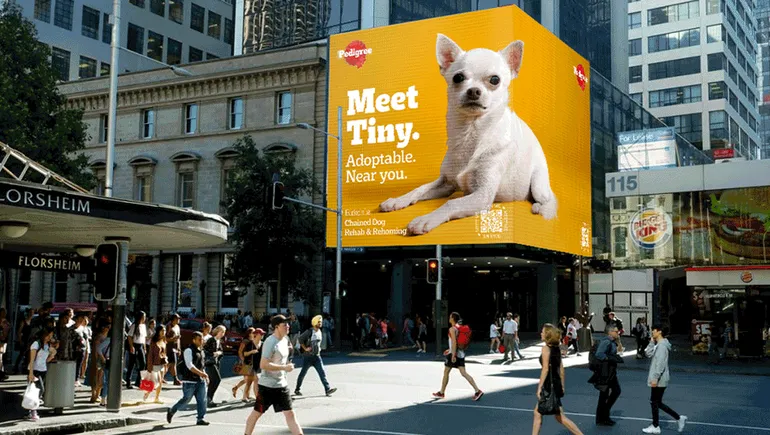
How Cashmere’s blend of culture and data is winning clients
Culture has become a popular buzzword in marketing as brands juggle mandates around complex topics like sustainability and diversity and inclusion while also trying to grow their business. This year has put front and center the pitfalls that arise when a cultural play doesn’t pan out, or worse, becomes a lightning rod for negative media attention. As marketers try to strike the right tone in this environment, agencies like Cashmere that focus on making brands more culturally relevant and socially forward are reaping the benefits.
Amid a period of industry belt-tightening, the Los Angeles-based agency has racked up several account wins. Dave & Buster’s named the shop its social and public relations agency of record (AOR) in February while Marriott Bonvoy appointed Cashmere its social AOR in March, Marketing Dive can exclusively share. Cashmere, which was merged into S4 Capital’s Media.Monks unit in 2021, also helped Budweiser develop a new global music platform that celebrates the 50th anniversary of hip-hop. Called “Raise the Crown,” the campaign has a planned rollout in the year’s second half and will extend into 2024.
“[Brands] all want to be younger, they all want to be more diverse, they all want to be more culturally relevant, meaning showing up in ways that matter for their consumer,” said Ryan Ford, Cashmere’s president and chief creative officer, while nodding to the economic pressures weighing on budgets.
For established brands, like the more than 40-year-old Dave & Buster’s, a cultural agency is positioned as a modern way to elevate a social presence. The “eater-tainment” company is aiming to raise the profile of its namesake brand as well as Main Event, a purveyor of bowling, laser tag and other event spaces it acquired for $835 million last year, with Cashmere’s expertise.
“Cashmere has proven their ability to identify, create and quickly action impactful campaigns that resonate with diverse audiences in a way that we felt could take our marketing approaches to the next level,” said Ashley Zickefoose, CMO of Dave & Buster’s, in an email.
“We needed a powerhouse agency like Cashmere that could help us unlock the potential of each brand by tapping into cultural conversations and bringing each brand to life in powerful yet less scripted forums,” Zickefoose added.
Earning the spotlight
Part of Cashmere’s appeal with clients stems from a focus on earned media and social impact over traditional paid media plays that can be more costly and time-intensive to execute, the company says. Mass consumer brands have more frequently espoused the benefits of earned media at a time when their shoppers — and particularly valuable, more diverse young cohorts — are more likely to spend downtime on apps like TikTok than watching cable TV. Ford compared the corresponding shift happening with agencies to the advent of streaming, when Netflix left brick-and-mortar rivals like Blockbuster in the dust.
“You don’t throw out the baby with the bathwater. You don’t throw out linear TV or network commercials,” said Ford, who has worked at Cashmere since 2008. “But if you’re relying on that, and if that’s the core of it, then you’re just not moving the way that culture is moving.”
Cashmere President and Chief Creative Officer Ryan Ford
Permission granted by Cashmere
Cashmere’s philosophy is also resonating as marketers navigate a transition out of the pandemic, which helped enshrine channels like digital, social and streaming. Meanwhile, 71% of CMOs believe they lack the budgets needed to properly execute their strategies in 2023, a recent Gartner survey revealed.
Of course, social comes with plenty of its own baggage. Twitter is a mess under Elon Musk’s ownership, Meta’s bets on the metaverse are in crisis and TikTok faces the threat of a U.S. ban. Still, Ford believes that volatility is just a reality of operating in the current environment.
“There’s always going to be a new platform, there’s always going to be trouble with the current platform,” the executive said. “You’re always going to have a spokesperson who maybe isn’t aligned with your brand pillars.”
Riding the tailwinds
Marketers have at the same time put less emphasis on traditional agency relationships as they prioritize agility and cost savings. AOR designations for creative and media agencies increased last year, but the value of those new business wins plummeted, according to a February report from consultancy R3, which declared the old AOR model “dead.”
Despite pullbacks, many brands are actively seeking out change in the chase to win over groups like Gen Z, potentially benefitting marketing services providers that can break from the mold.
“There’s been enough change that has forced even the most stodgy and stoic brands to start thinking about the future, and that future is now,” said Ford. “What we’re realizing is our clients don’t want five-year plans, necessarily, or they can’t wait for a five-year plan.”
Marriott Bonvoy is among the companies that have come out of the COVID-19 crisis on strong tailwinds, buoyed by a massive rebound in consumer travel. Cashmere is working to help the hospitality giant, which operates over 30 different brands, reach out to a reenergized “next generation” customer base on apps like TikTok and Instagram, according to Ford.
“How do we show up in ways on social that mean something to this new audience that is excited to get out there and travel like never before after COVID?” asked Ford. “Are there pockets of culture that you have an ability and serendipitous alignment with that you haven’t checked in with for a while? We’re helping [Marriott Bonvoy] find that answer.”
Wedding data with culture
Cashmere, which was founded in 2003, saw its profile rise several years ago when it laid claim to being the industry’s first dedicated culture agency. Taco Bell named the shop as its cultural AOR in 2021, a unique arrangement at the time, and the Media.Monks deal followed not long after.
With the merger, Cashmere has been able to scale its efforts more quickly, enabled by the digital-first agency’s richer data troves, according to Ford. Looking further down the road, the executive expressed interest in expanding into international markets for future growth.
“Our perspective has always been there, but our ability and capability to be able to offer that meaningfully and consistently was limited before the merger,” said Ford. “Now, it’s unlimited.”
Parent S4 Captial saw net revenue up 7% on a like-for-like basis in the first quarter and is targeting 8-12% growth for the full year. Marriott was named as one of the accounts that S4 believes could become a “whopper,” or client with more than $20 million in revenue per year, according to an earnings statement.
Cashmere’s specialty in areas like diversity and inclusion could face tests as such topics become bigger flashpoints for controversy. Target just this week pulled some store displays for LGBT Pride Month due to threats made to employees. Recent months have surfaced several similar instances of brands dealing with intense blowback over marketing efforts, large and small, that are perceived as peddling an agenda by certain political groups. Conversely, the headline-dominating discourse surrounding these flare-ups could indicate that cultural know-how is even more important for marketers today.
“There are culture wars that are happening, and if you show up in the wrong way, your core audience is going to let you know,” said Ford. “There are shifts to understanding who your core consumer is and who your core consumer can be. This change is coming for everyone.”
Clarification: This story has been updated to clarify Cashmere’s relationship with Marriott. The account is for the Marriott Bonvoy loyalty program that covers the hospitality firm’s portfolio.





